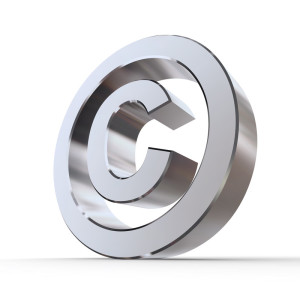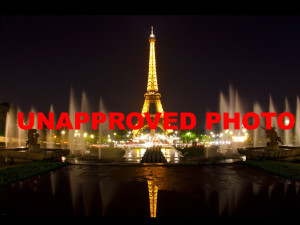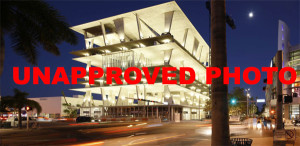Copyright on Photos of Buildings!?
Copyright on Photos of Buildings?!
A friend on mine recently posted an article on my Facebook Timeline about copyright infringement by photographing the Eiffel Tower at night. This reminds me of another article about copyright infringement by photographing a parking garage in South Beach, FL. What’s going on here? Can a building have a copyright, and can you infringe that copyright by taking a photo of it?
Yes, a building can have a copyright, and yes you can infringe upon those rights. But first…as any lawyer will tell you…you have to understand the rule before you can apply it to the facts. In these situations, the rule is copyright law. Instead of reciting the boring law, I’m going to use an abstract situation to show you the meaning and intent of the law.
Copyright Law by Example
Say you’ve created a work of art and you think you can make money from it. You would be rightfully ticked off if someone else took pictures of your art and started making money from their pictures. By copyright law, you (the creator of the work of art) own the exclusive right to copy it (taking a picture of it), display it, and create derivative works (e.g. by putting the pictures on t-shirts). In fact, you could sue that interloper for ripping you off and you would win!
But let’s say a newspaper wanted to publish a story about you and your artwork. If the newspaper put a picture of your artwork in their story on you, you could not successfully sue the newspaper. The “newsworthiness” of your artwork allows a fair-use exception to your exclusive rights of preparing derivative works and copying and displaying it. The same exception is carved out for the purpose of educational use and parody.
The fair-use exception to exclusive use of a copyrighted work is reasonable when the person making the derivative work is not engaging the original art in commerce as a work of art. It makes sense if the commercial reason for publishing pictures of the art is either its newsworthiness or its educational worth (or to make fun of the art or artist).
Applying Copyright Law to Facts
This all makes perfectly good sense if the work of art you created was, say, a photograph  of a beautiful wildlife scene in Africa for which you spent thousands of dollars to travel to and hundreds of hours planning to shoot. And it makes sense for a painting that you painstakingly created over a period of five days. And it makes sense if your work of art is a sculpture that uses a surprisingly unique methodology that you recently invented.
of a beautiful wildlife scene in Africa for which you spent thousands of dollars to travel to and hundreds of hours planning to shoot. And it makes sense for a painting that you painstakingly created over a period of five days. And it makes sense if your work of art is a sculpture that uses a surprisingly unique methodology that you recently invented.
Now, let’s come back to the Eiffel Tower. Isn’t that structure a giant sculpture and therefore a work of art? So doesn’t its creator deserve to be treated as any other artist and therefore be granted copyright rights? Methinks so! (For this particular work you must ignore the time limits on copyright rights.)
Now what if the work of art you created is also functional? Does the fact that the work has a use make it less artistic? The artists who create functional art think their creations are every bit as much artistic as works that have no function. In art that contains a functional component you still have a copyright on the artistic aspect, which after all is much like a sculpture (you may even be able to get a patent on the functional aspect as well, but that is beside the point here).
But, what about a parking garage?! Really? A work of art? Don’t let its function fool you. If the garage uses “a surprisingly unique methodology that [was] recently invented” it should be afforded no less respect that that sculpture I had you hypothetically create a few paragraphs ago. In fact, the threshold of creativity required for a work to be considered copyrightable is pretty low.
The Fair Use Exception
So if we are on the same page now, both the Eiffel Tower and a uniquely designed parking garage should be copyrighted creative works, and  that means the creators own the exclusive right to make derivative works including photographs of them for display. But the fair-use exception to that rule still applies to a newspaper or educational institution, either of which may create derivative works and publish them.
that means the creators own the exclusive right to make derivative works including photographs of them for display. But the fair-use exception to that rule still applies to a newspaper or educational institution, either of which may create derivative works and publish them.
May you take photographs of the Eiffel Tower or the South Beach garage? Not if you try to use your photos to make money off the artistic value of these buildings. That would violate the owners’ exclusive rights. So don’t be taking a photo of the South Beach Garage and trying to sell t-shirts that bear that photo with the caption “Come Park With Me”…or any other saying for that matter.
